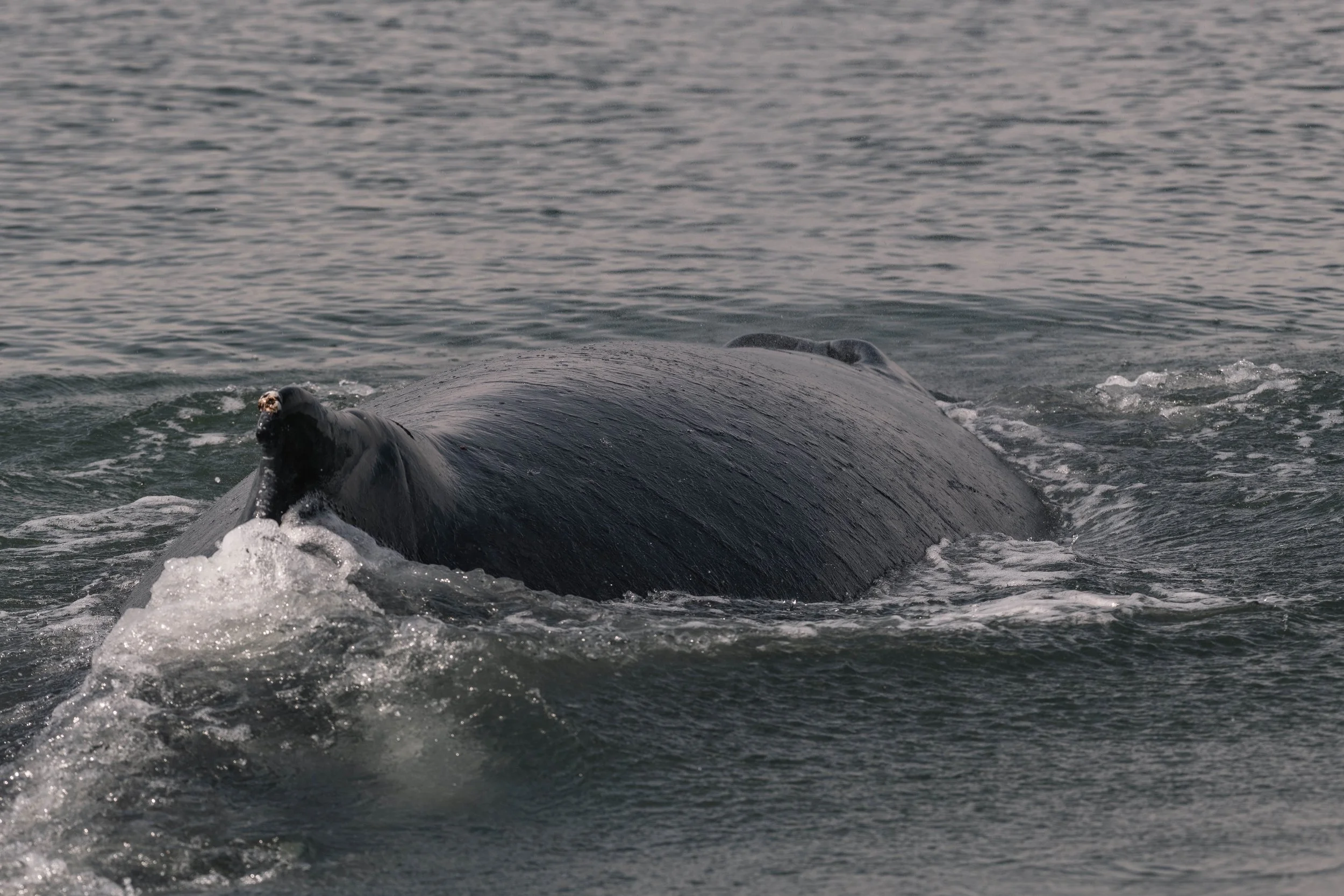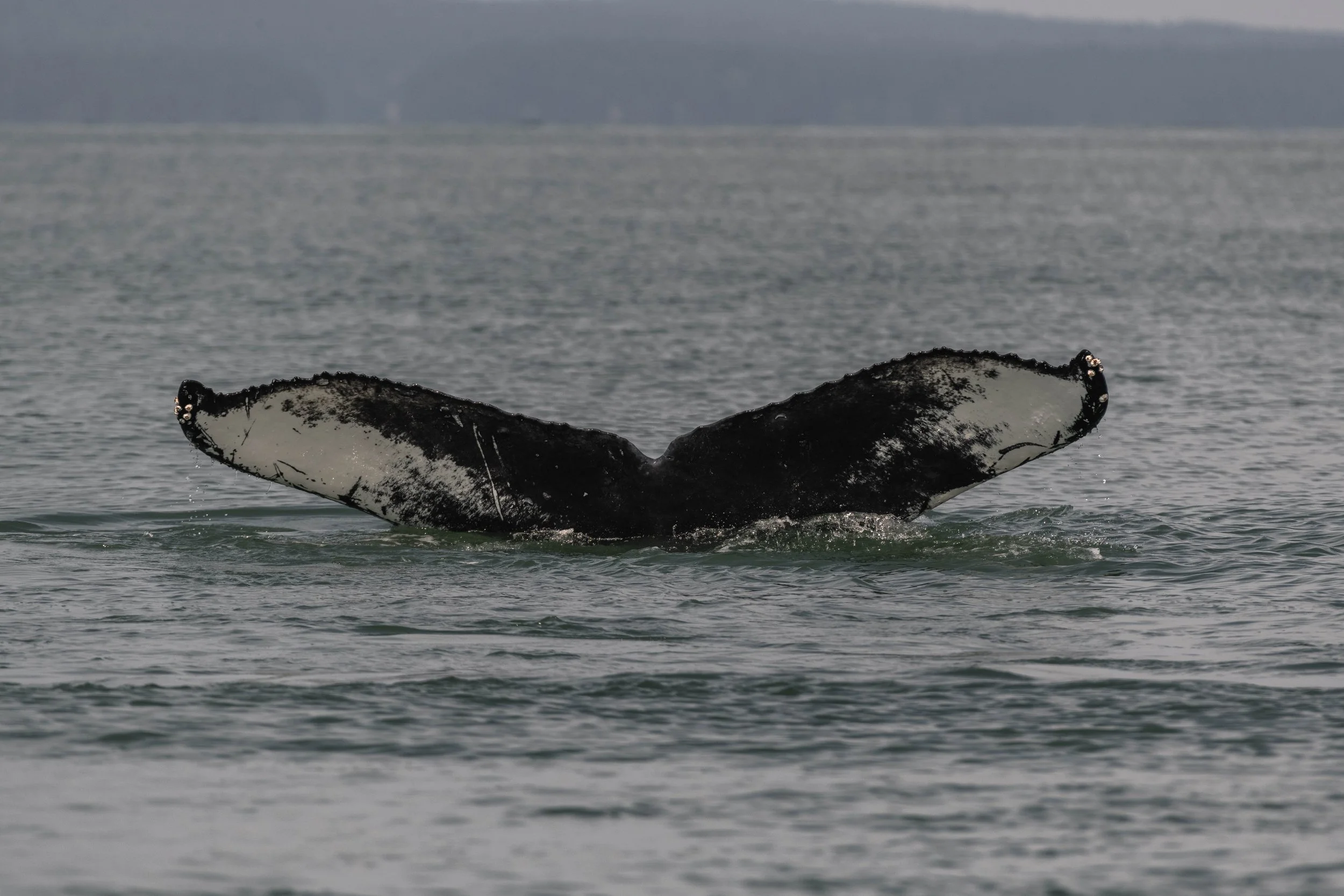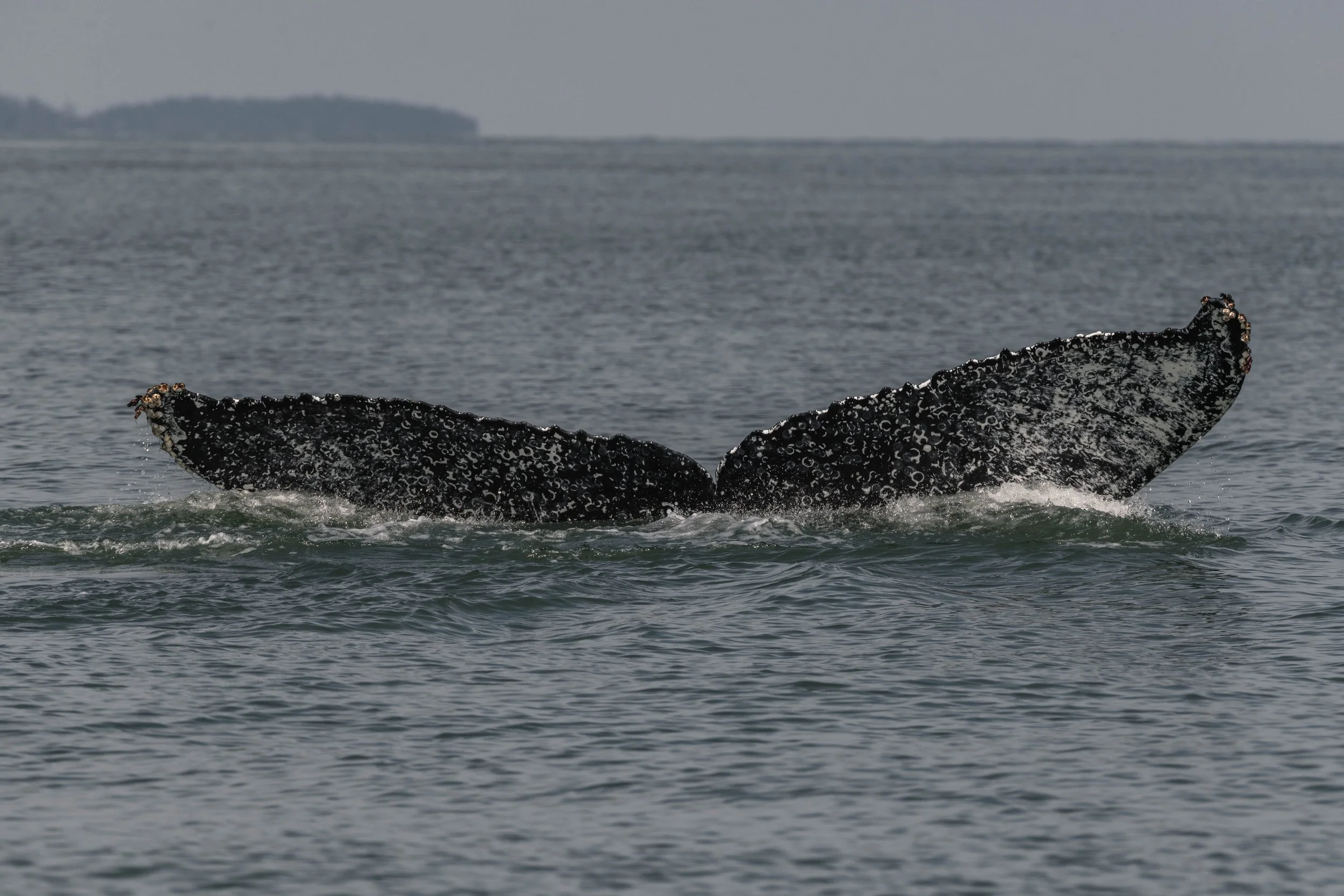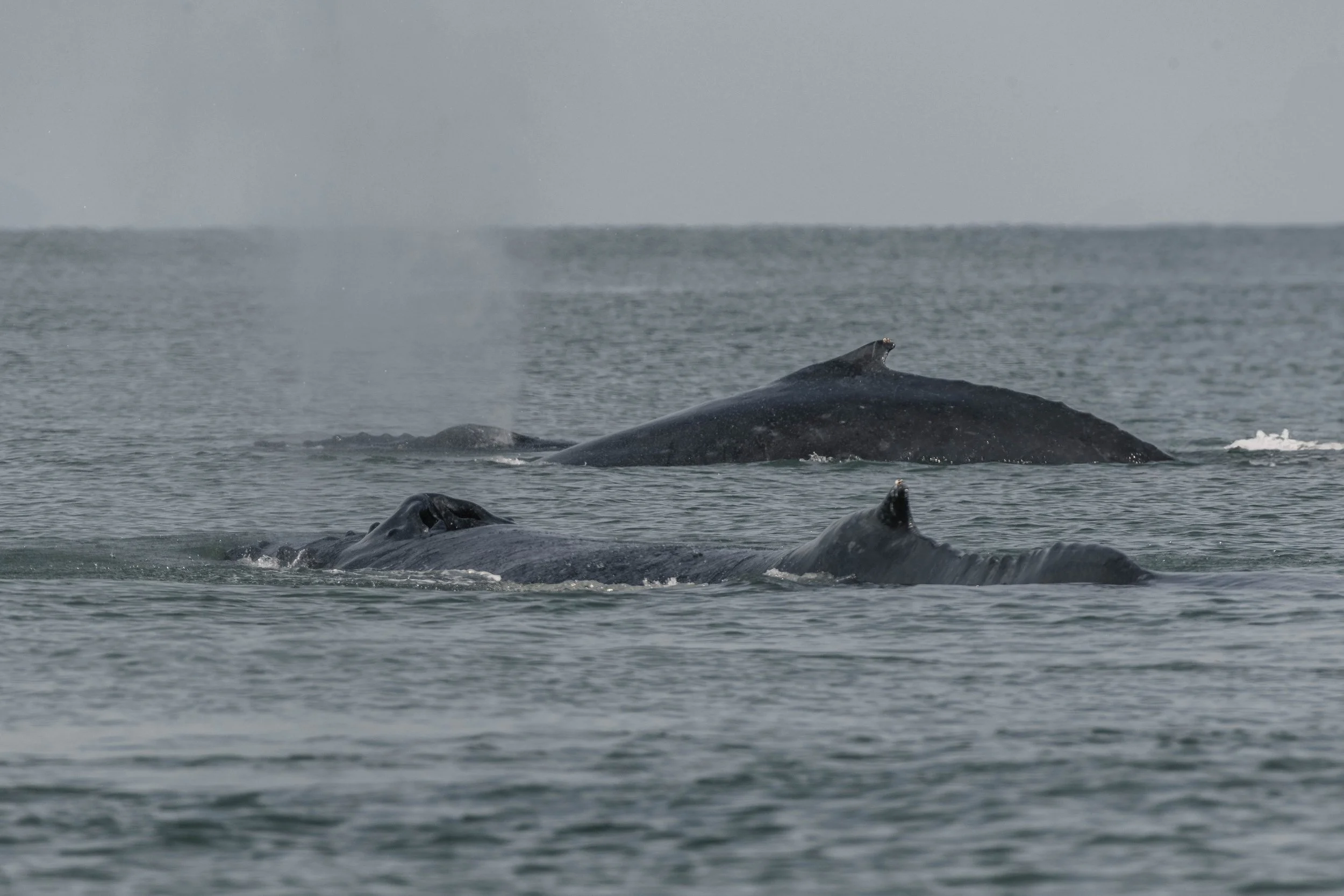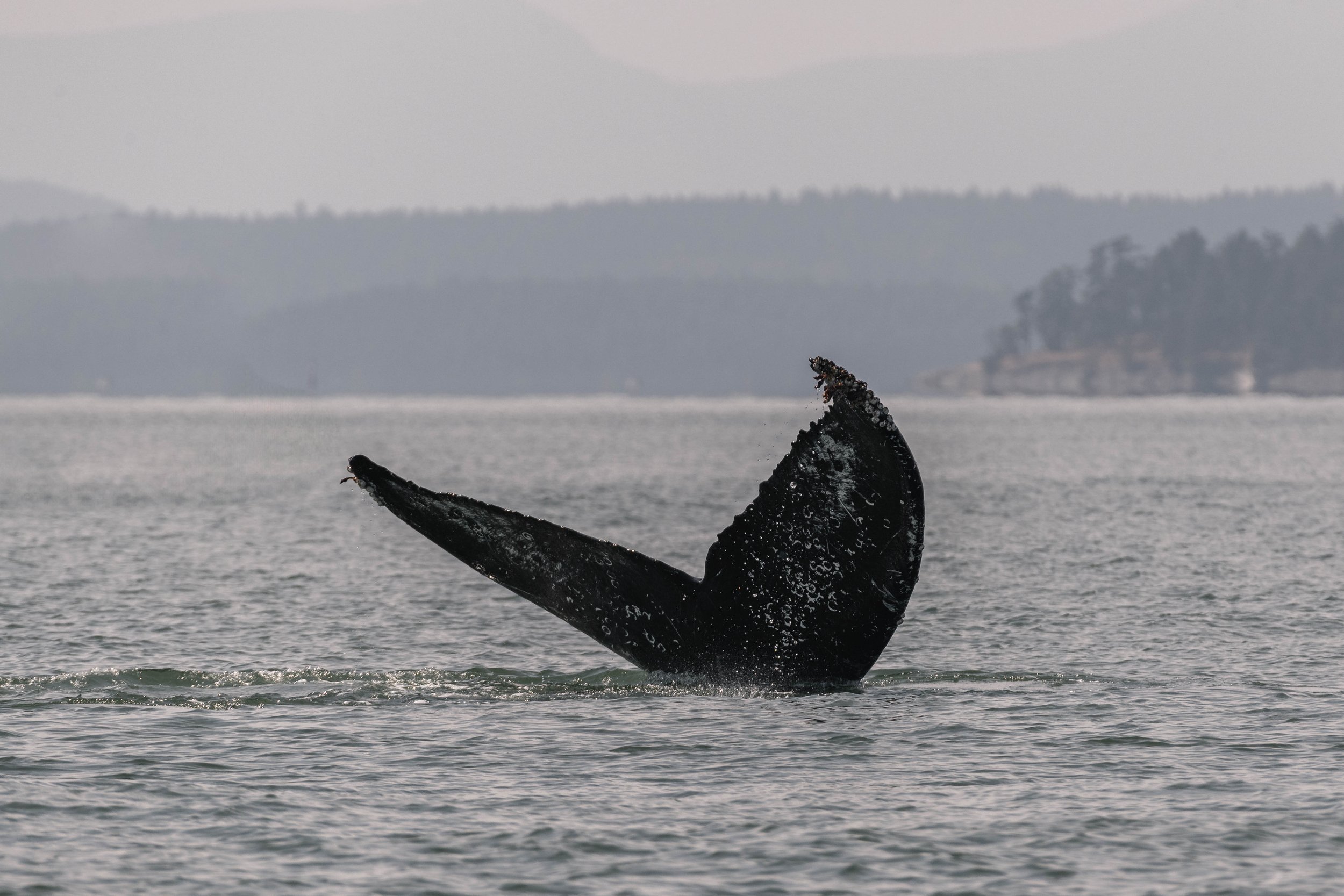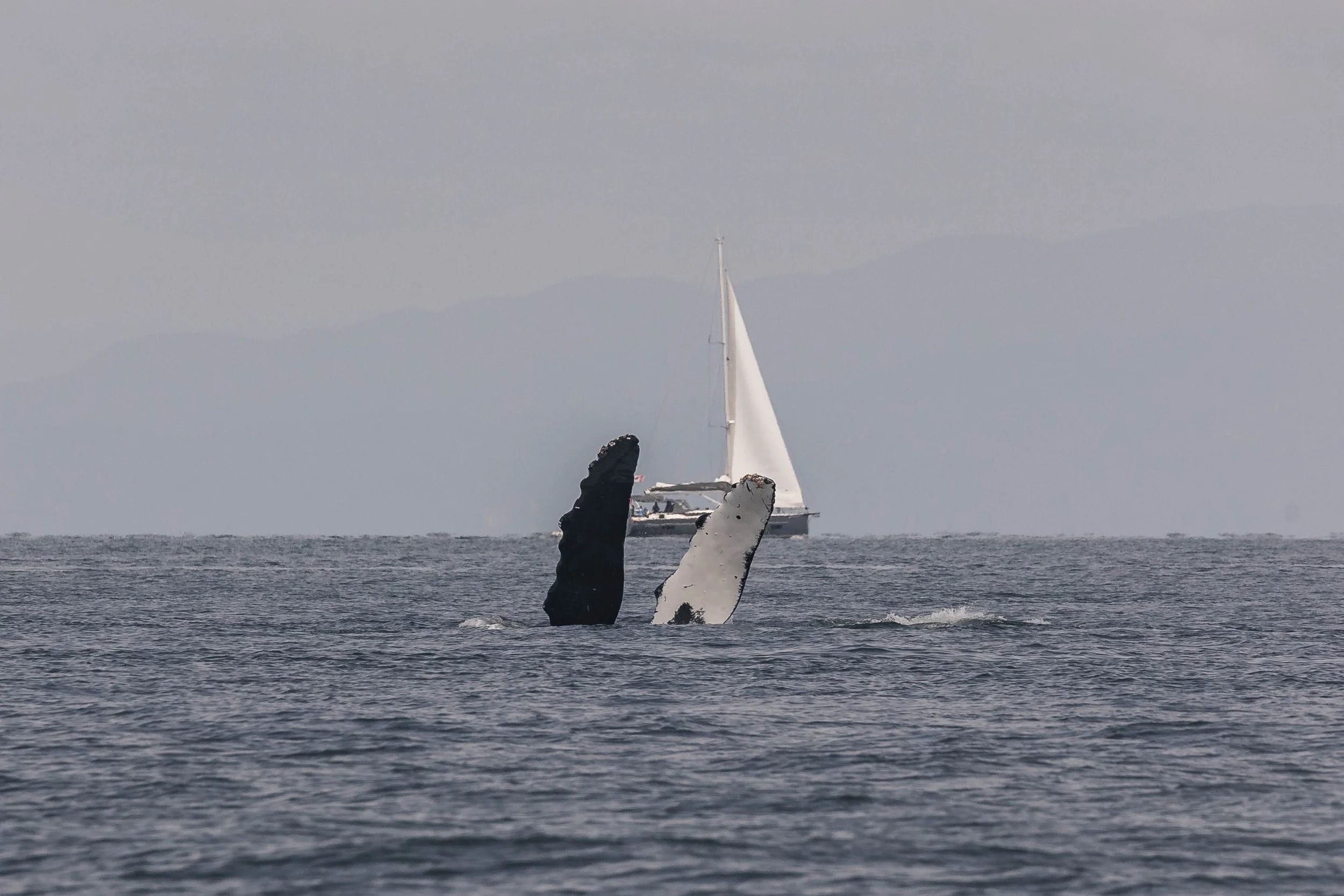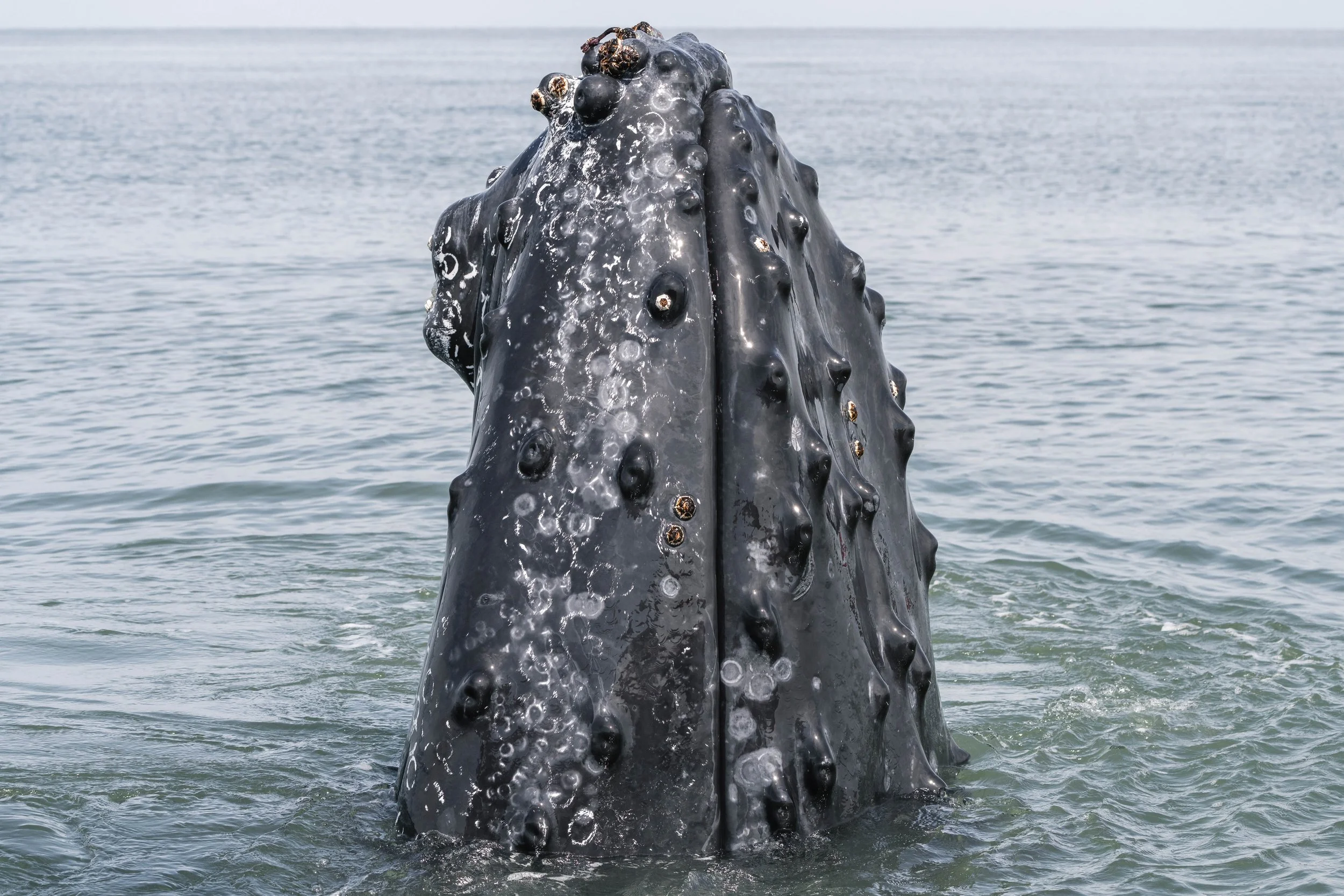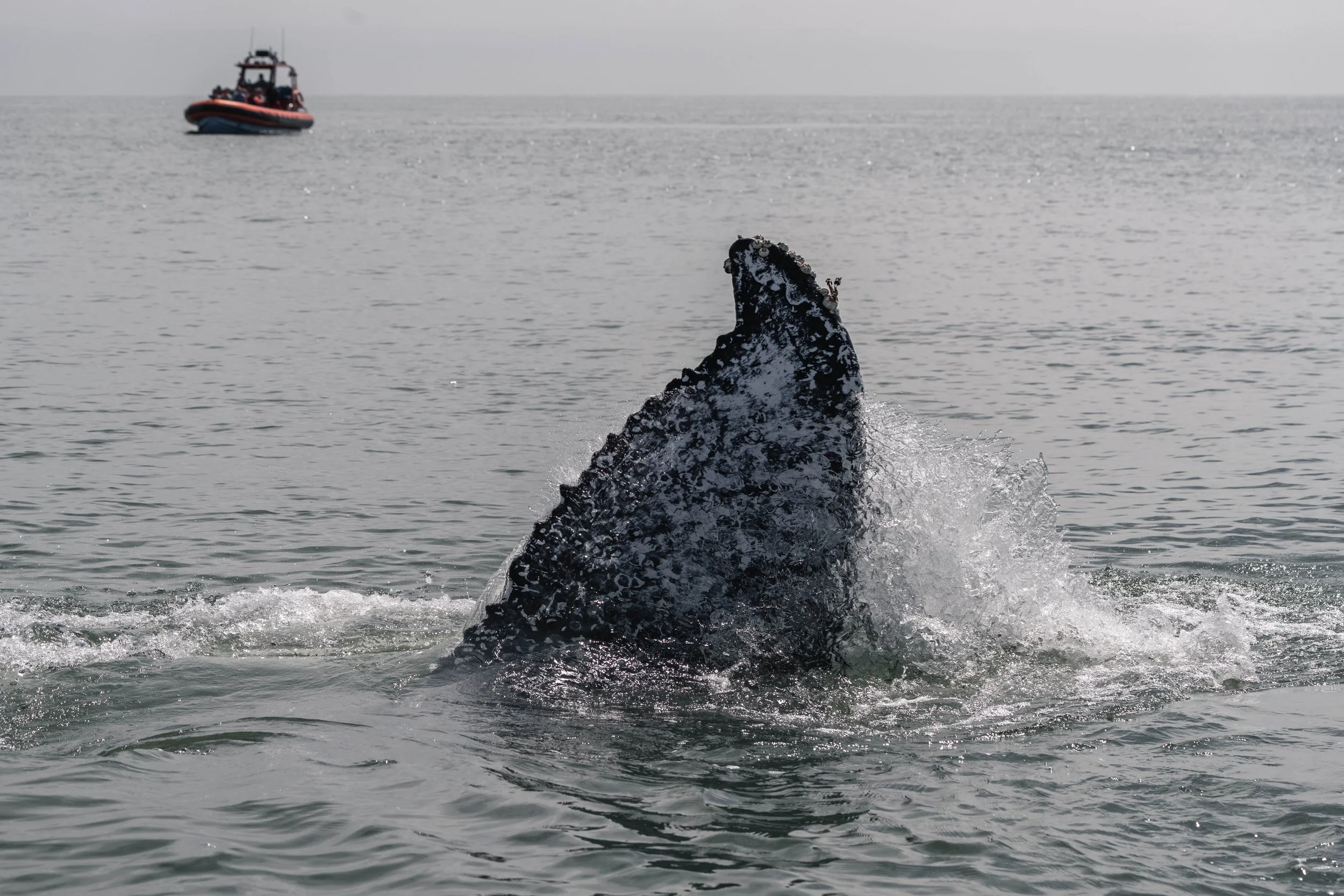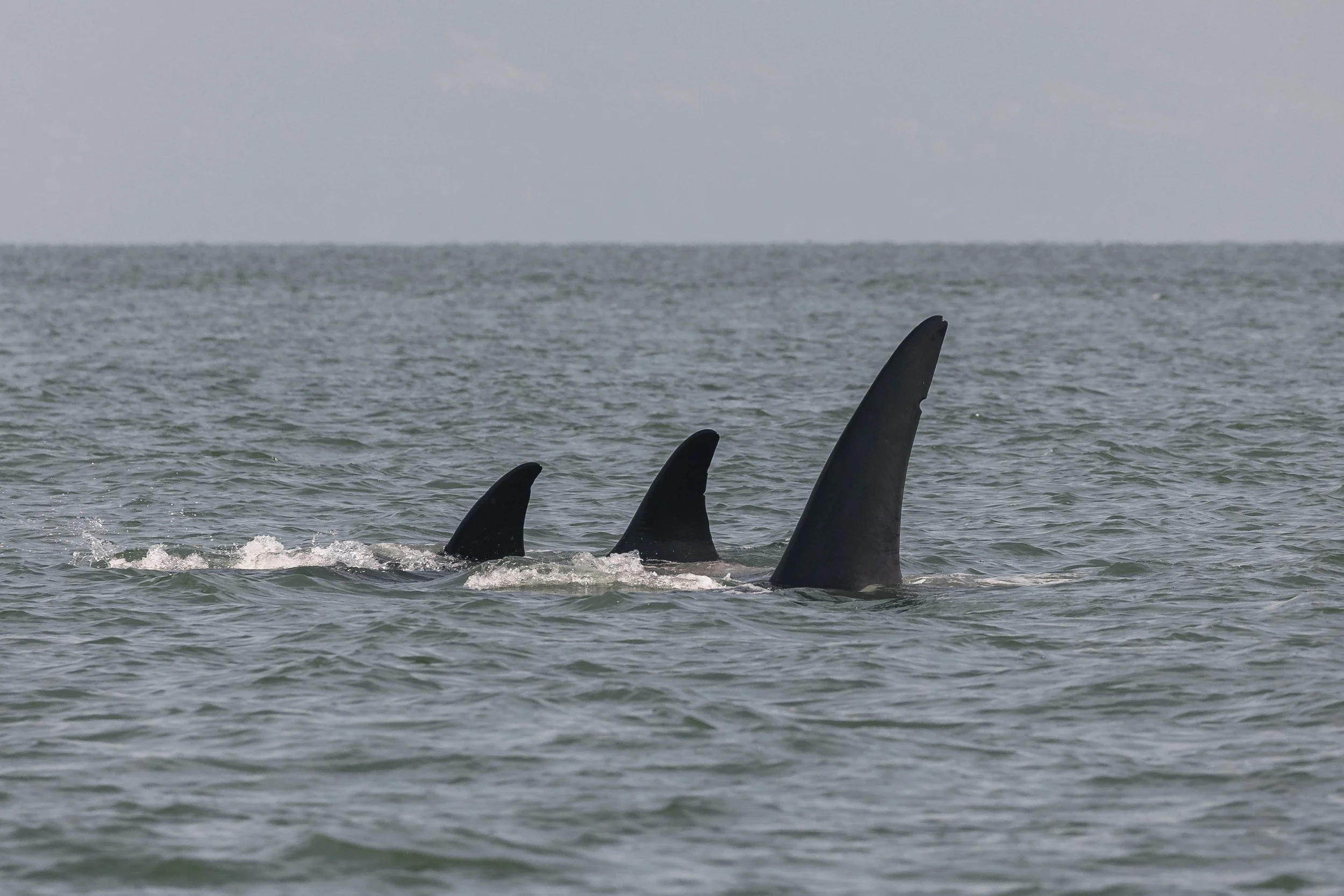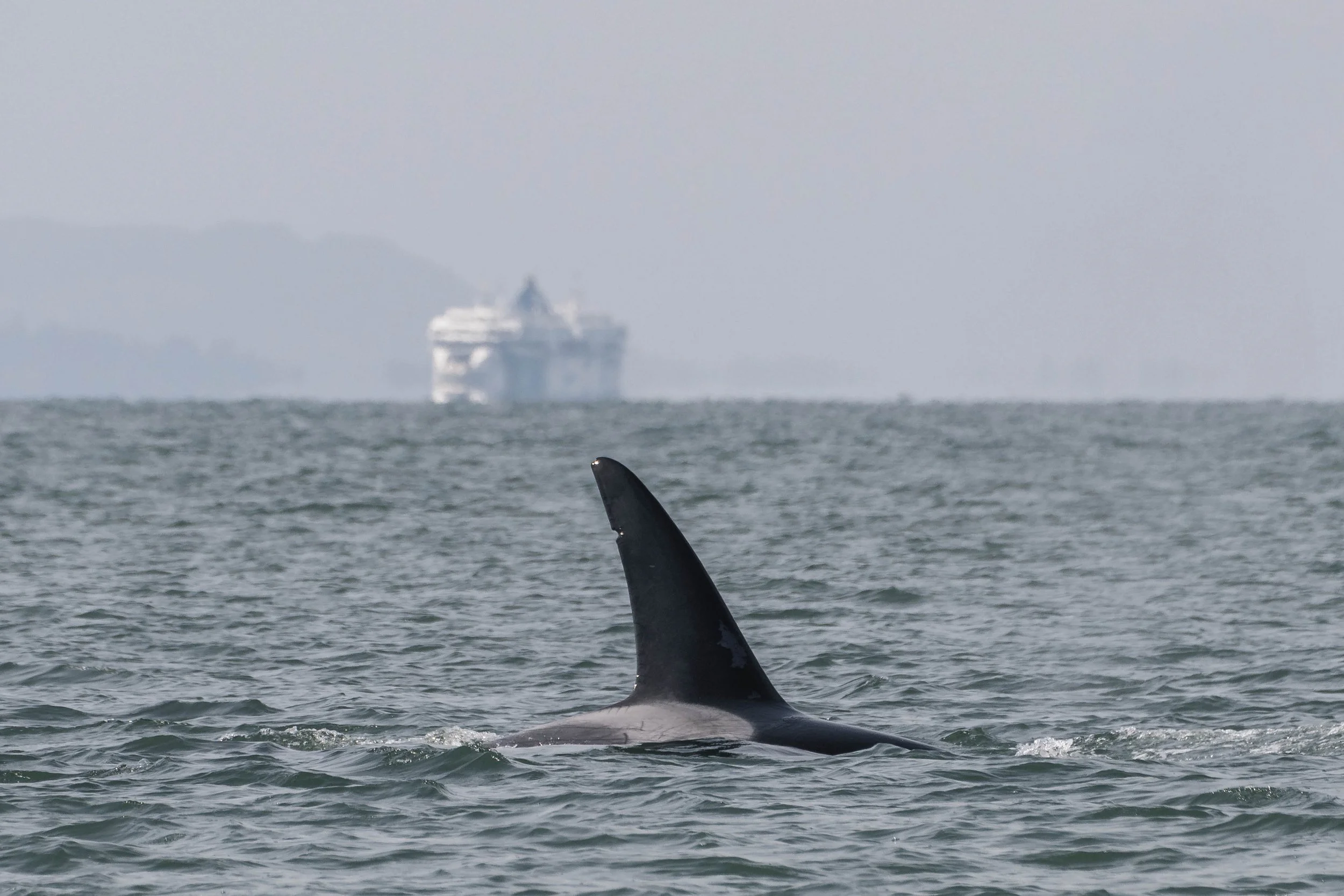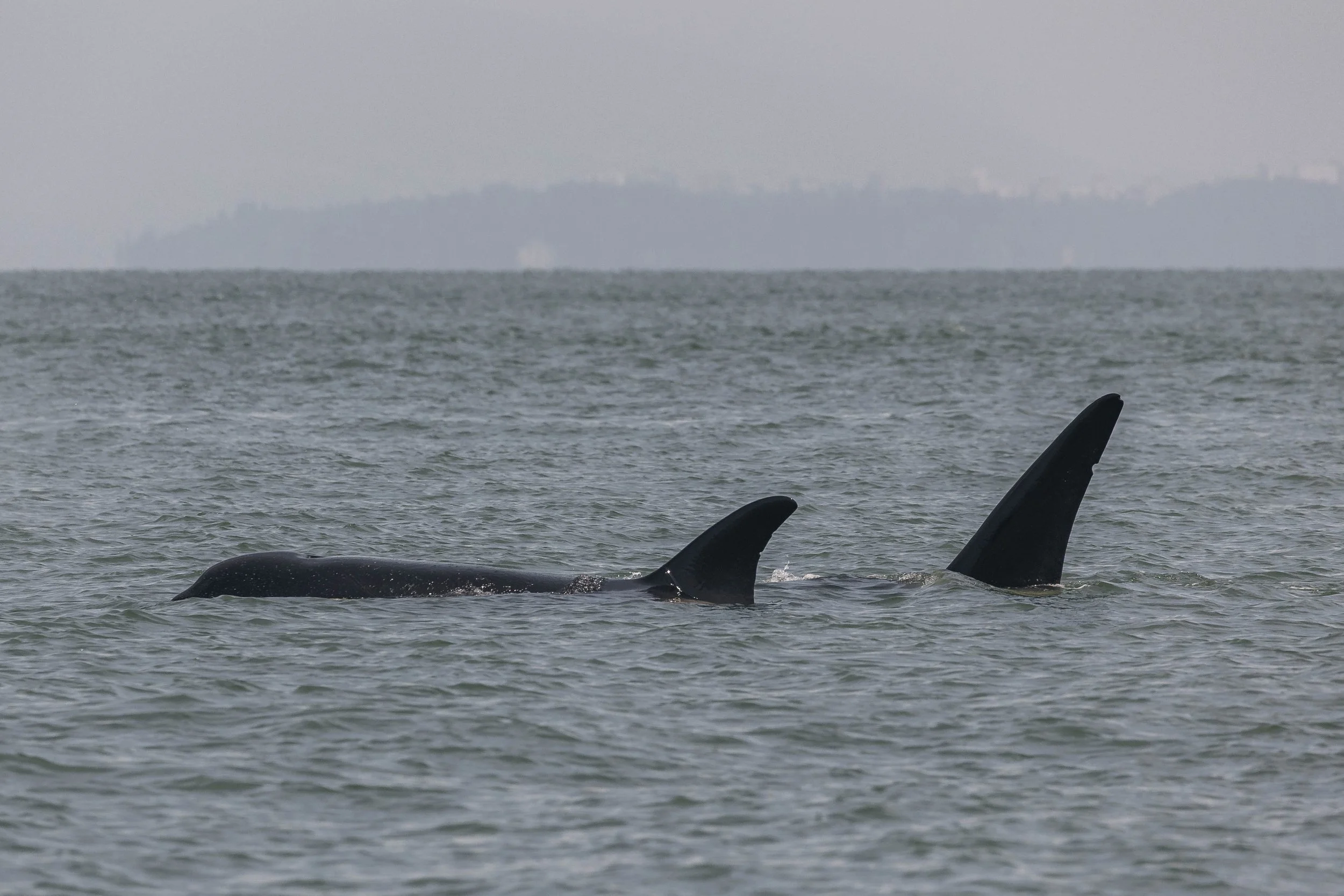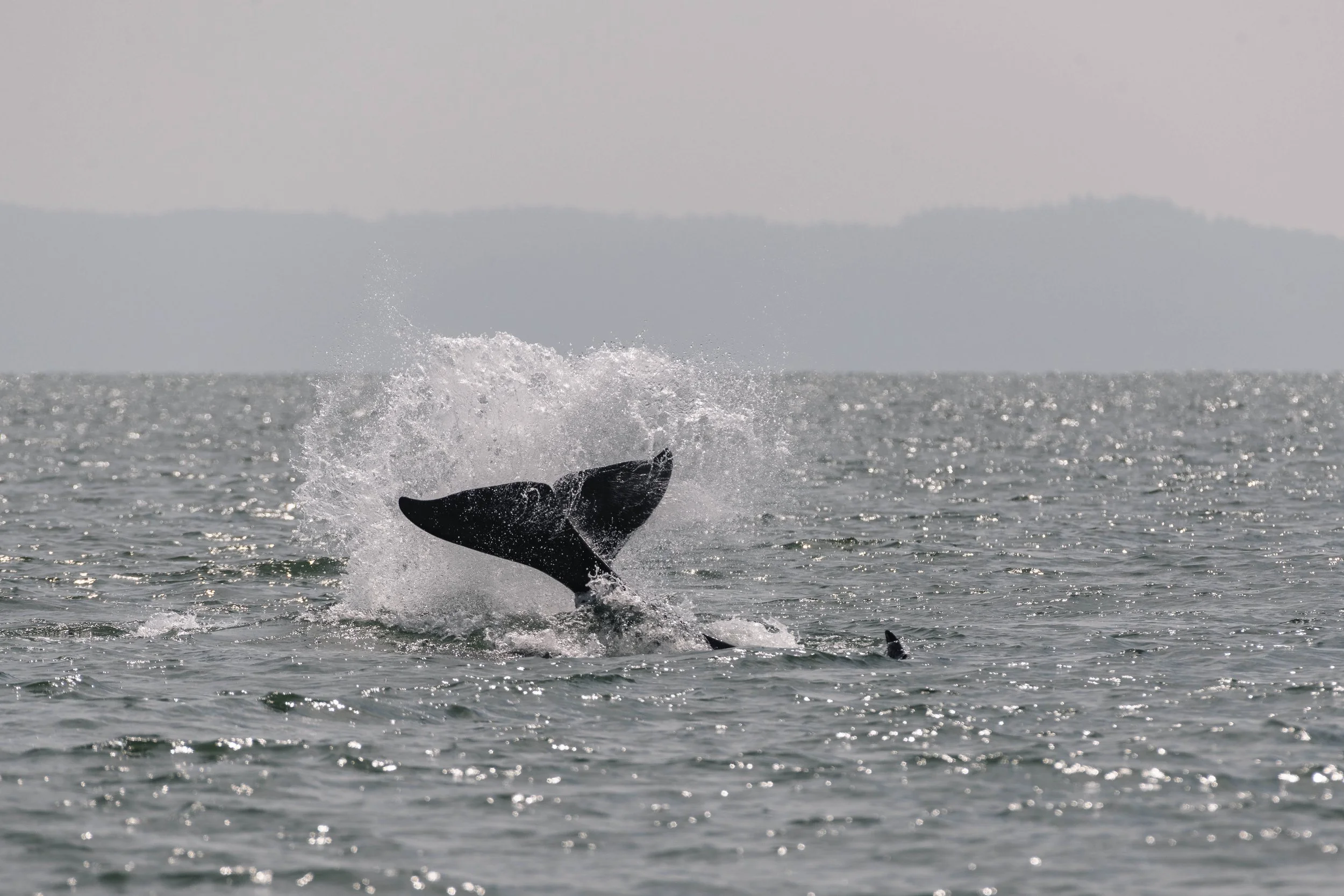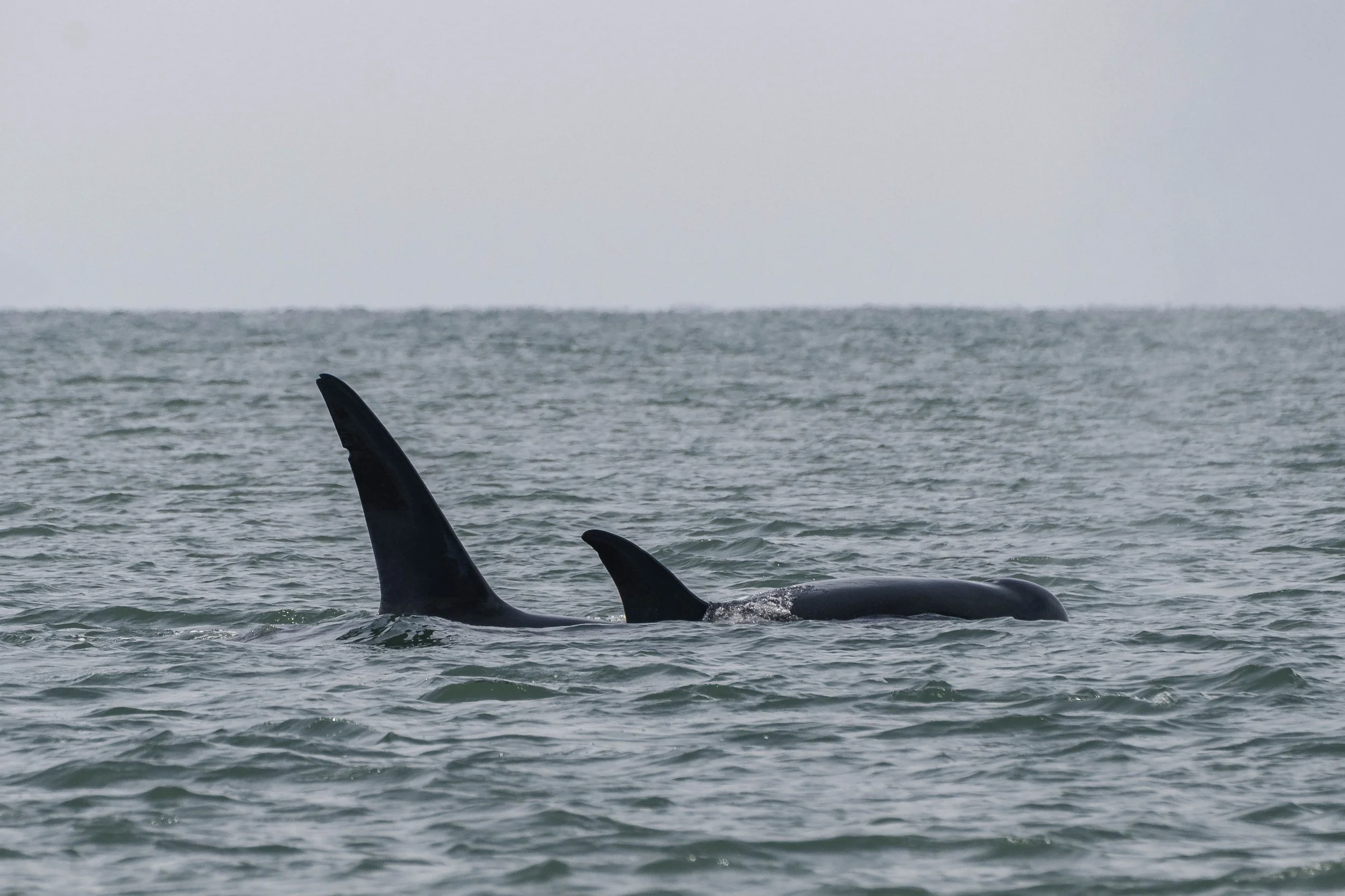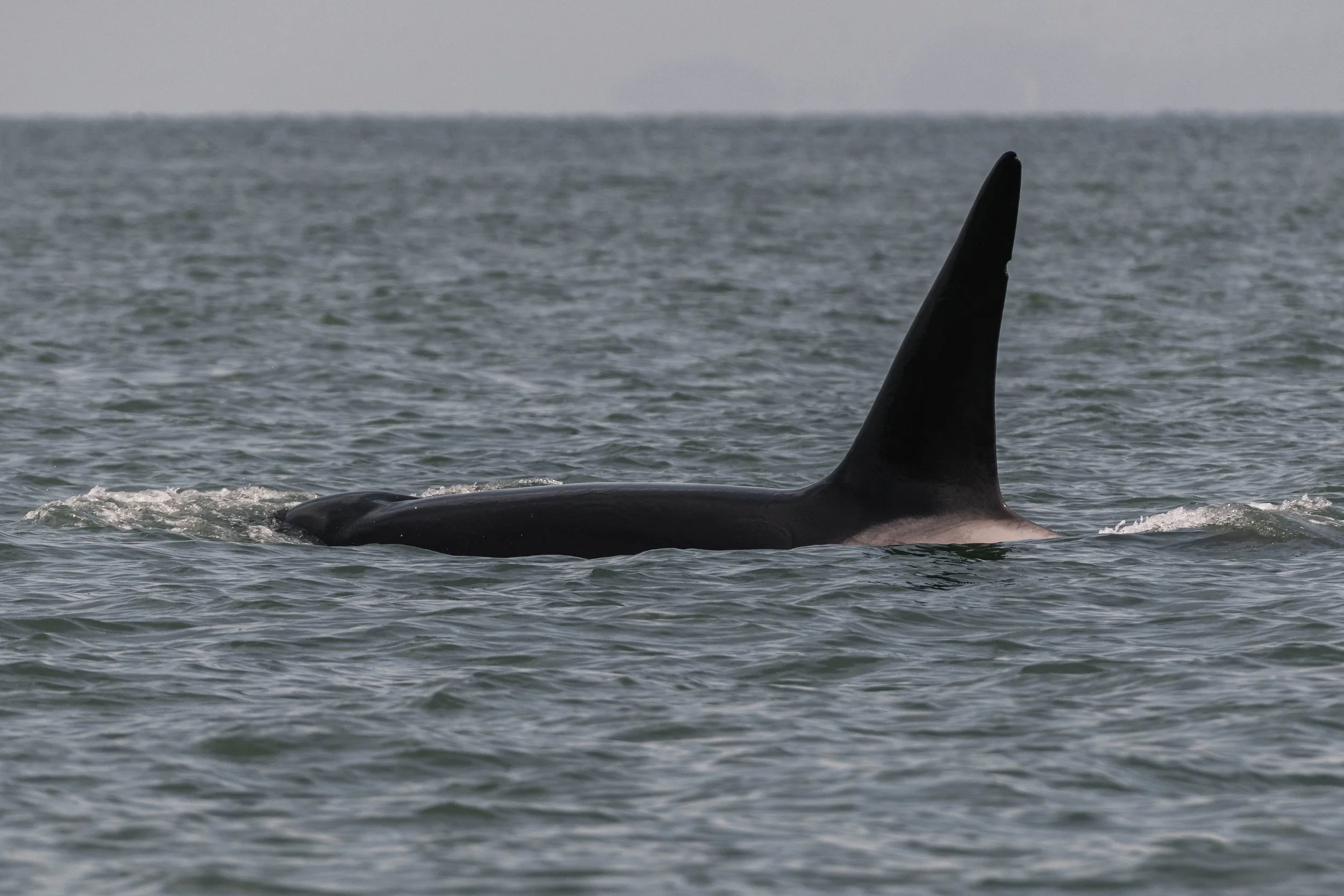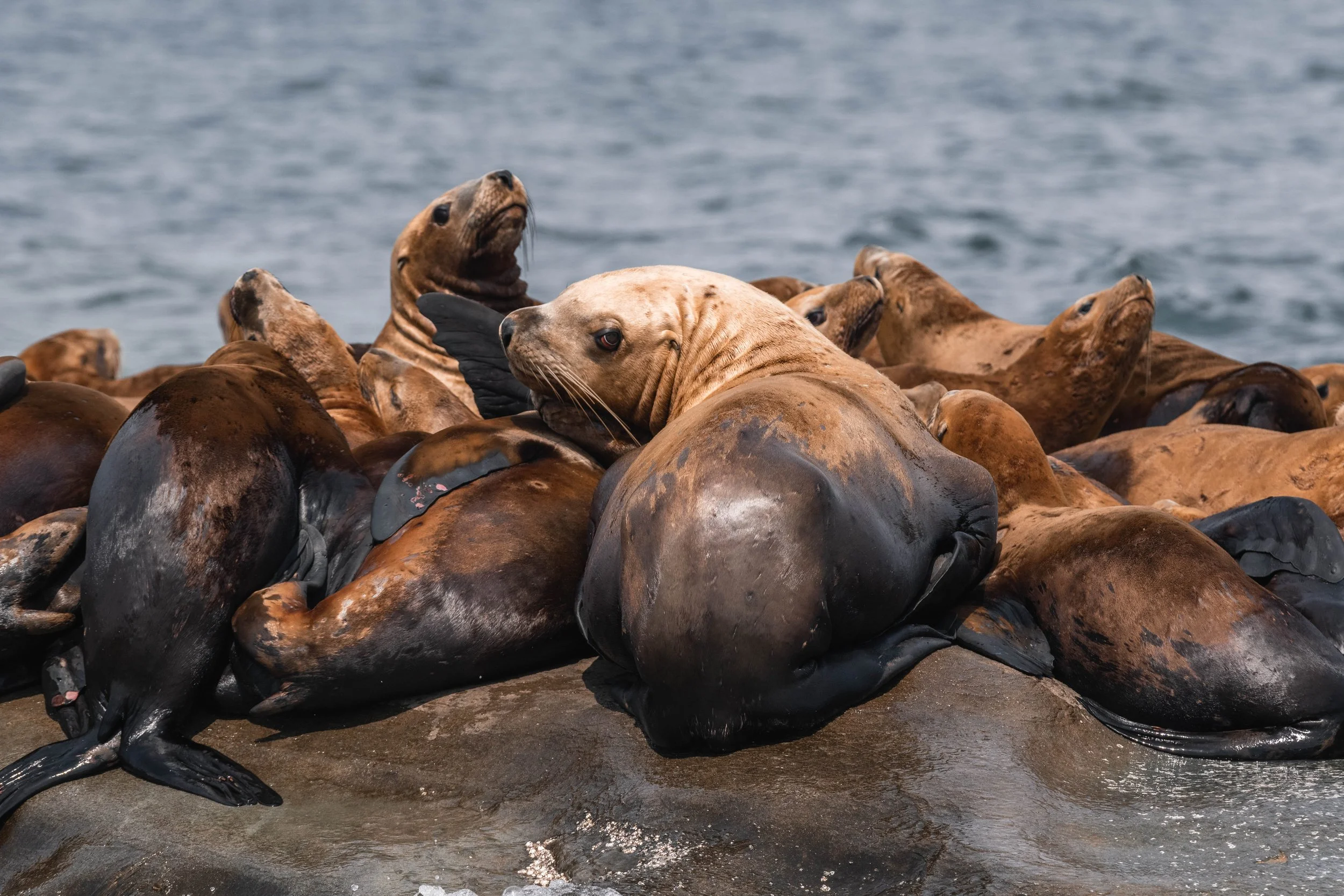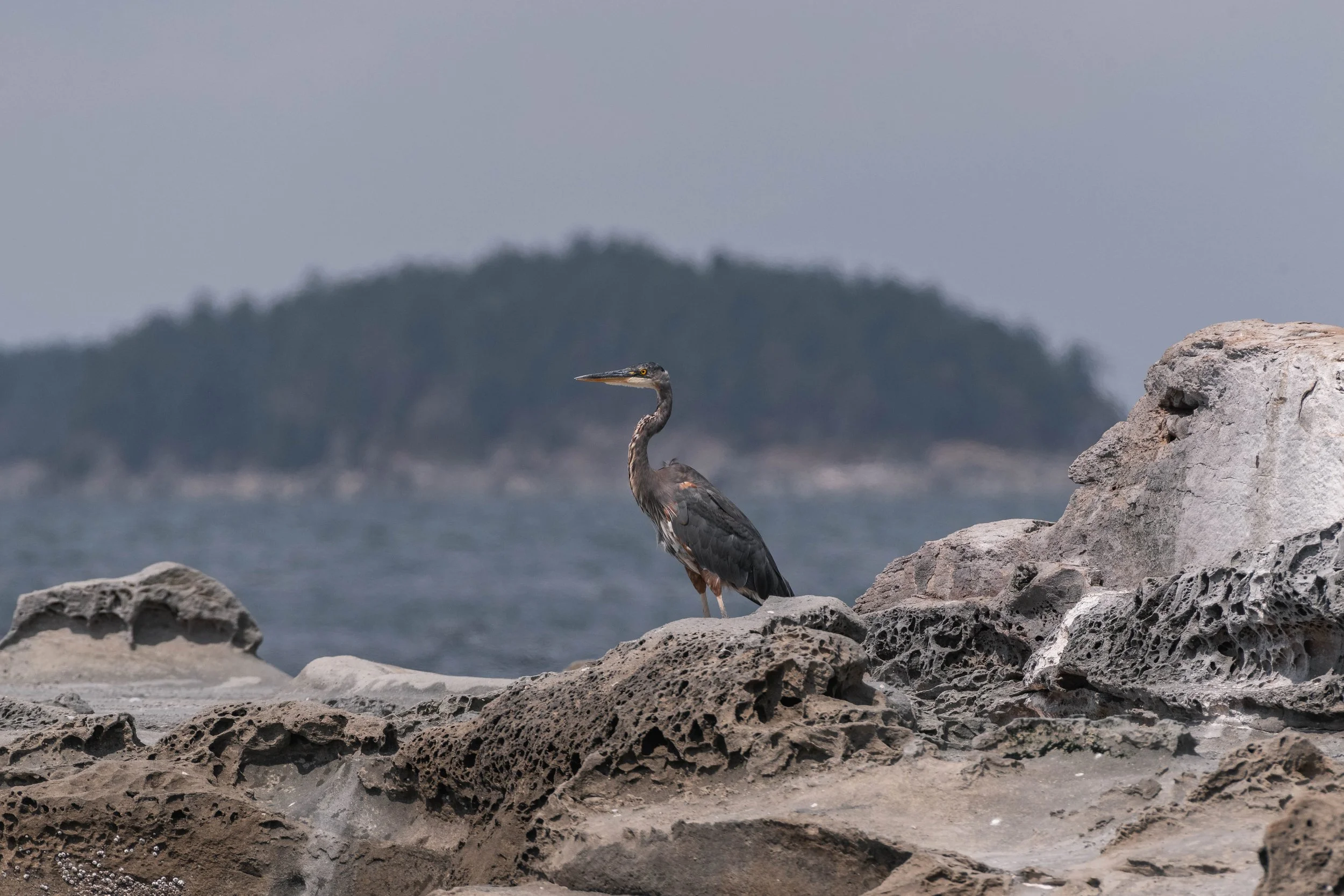August 4, 2025, 10:30 AM - A double double in the Strait.
It was another spectacular day out on the Salish Sea, with the sun shining down and the water lying calm and glassy. With our full fleet off the dock this morning, anticipation was high as we made our way into the Strait of Georgia. It didn’t take long before we were rewarded with the sight we were all hoping for, humpback whales!
The two open boats were first on scene, spotting several familiar flukes among the waves: Watson/Cerulean (BCY1461 ), BCY0885 calf 2023, and Dalmatian (BCY0994) alongside a companion who remains unknown at this time. Meanwhile, aboard Kula, our semi-covered vessel, guests were delighted to encounter Twinning (BCX1207) and Yogi ( BCY0409).
These humpbacks were in fine form today, showing off a spectacular range of behaviours. We were treated to spyhops, pec slaps, tail lobs, and dramatic fluking, all clear signs that these massive animals were active and thriving in the Strait. Every movement of a humpback, from a simple tail flick to a towering breach, comes at a cost of precious energy. Seeing this level of activity means one thing: these whales are finding plenty to eat.
Humpbacks are baleen whales, feeding primarily on small schooling fish and krill. Instead of teeth, they have baleen plates, long fringed structures made of keratin that act like a sieve. When feeding, a humpback lunges through a school of fish or a concentration of krill with its mouth wide open, engulfing thousands of litres of water. Then, by closing its mouth and pushing the water back out through the baleen, the whale traps its prey inside to swallow. It’s an incredibly efficient system that allows such a massive animal, often weighing around 40 tonnes, to dine on some of the ocean’s smallest creatures.
After soaking up quality time with the humpbacks, we returned to search mode. Before long, another spout broke the horizon, but this one looked different. Sleek dorsal fins cut the surface: orca! Today’s encounter was with the T065As, a well-known family of transient orca.
T065A Artemis ♀ (1986)
T065A2 Ooxjaa ♂ (2004)
T065A3 Amir ♂ (2007)
T065A4 Ellifrit ♀ (2011)
T065A6 Callisto ♀ (2018)
We soon realized we were about to witness one of the most dramatic moments in the natural world, a hunt. A lone harbour seal had been spotted, and the orca wasted no time moving into position. Transient orca are marine mammal hunters, relying on stealth, coordination, and speed to take down their prey. Unlike their fish-eating cousins, these orca work as a tight-knit family unit, often communicating with subtle cues and surrounding their target before striking.
The hunt was swift, and before long, the family had secured their meal. What followed was just as fascinating: prey sharing. Orca often divide their catch among family members, strengthening their social bonds and ensuring everyone, from the youngest calves to the matriarch, receives nourishment. Afterward, the T065As had energy to spare, and we watched in awe as they celebrated with tail slaps and surface activity, a fitting display of their success. It’s not every day we get to witness a hunt, and to see it firsthand was an extraordinary privilege.
As the day wound down, the Strait still had more wildlife to share. Along the shoreline, we saw Steller Sea Lions hauled out, massive and loud as they jostled for space. These giants, the largest of the sea lion species, can weigh over a ton and feed primarily on fish, squid, and octopus.
Nearby, a Great Blue Heron stood statuesque in the shallows, scanning patiently for its next meal. Herons are remarkable hunters, striking with lightning speed to catch fish, amphibians, or even small mammals. What’s equally fascinating is how they care for their feathers. Great Blue Herons have special self-cleaning feathers, containing tiny filaments that they can comb through their plumage. This keeps their feathers waterproof, flexible, and in top condition for both flight and fishing.
From humpbacks showing off their feeding strength, to orca working together in a successful hunt, to sea lions and herons each playing their role in the ecosystem, today was a vivid reminder of just how rich and interconnected life is here in the Salish Sea. It’s days like these that make us grateful to call these waters home.
Enjoy the photos below by Aly Kohlman, Desarae Poier and Val Watson.
A big round whale. Photo by Aly Kohlman.
BCY0885 calf 2023 fluking. Photo by Aly Kohlman.
Watson fluking. Photo by Aly Kohlman.
How many humpbacks can you spot in this photo? Photo by Aly Kohlman.
Dalmatian fluking. Photo by Aly Kohlman.
Pecs up in the air! Photo by Desarae Poier.
Yogi’s fluke. Photo by Desarae Poier.
BCY0885 calf 2023’s dorsal fin. Photo by Desarae Poier.
Watson with a tail flick. Photo by Desarae Poier.
A corner of a fluke from BCY0885 calf 2023. Photo by Desarae Poier.
BCY0885 calf 2023 on their back. Photo by Desarae Poier.
BCY0885 calf 2023 lifting their tail. Photo by Desarae Poier.
Can you spot the tubercules on the jaw? Photo by Desarae Poier.
A spy hop! Photo by Val Watson.
Watson making waves. Photo by Val Watson.
Look at all the barnicles! Photo by Val Watson.
Watson’s fluke. Photo by Val Watson.
Left to right: T065A Artemis, T065A4 Ellifrit And T065A3 Amir. Photo by Desarae Poier.
T065A3 Amir. Photo by Val Watson.
T065A4 Ellifrit with T065A3 Amir behind her. Photo by Desarae Poier.
T065A4 Ellifrit with just the tip of T065A6 Callisto’s dorsal beside her. Photo by Desarae Poier.
T065A Artemis. Photo by Aly Kohlman.
T065A3 Amir. Photo by Aly Kohlman.
Tails up! Photo by Aly Kohlman.
T065A Artemis in front with T065A3 Amir following. Photo by Val Watson.
T065A3 Amir surfacing. Photo by Aly Kohlman.
Steller Sea Lions in a row. Photo by Aly Kohlman.
A sea lion cuddle puddle. Photo by Aly Kohlman.
A great blue heron can stand around 3.5 feet tall. Photo by Aly Kohlman.
A great blue heron on the rocks. Photo by Aly Kohlman.

